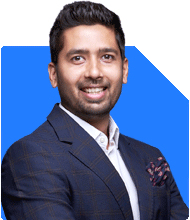Matured FD - What now?
Ramalingam Kalirajan |10872 Answers |Ask -Follow
Mutual Funds, Financial Planning Expert - Answered on Aug 23, 2024
He has an MBA in finance from the University of Madras and is a certified financial planner.
He is the director and chief financial planner at Holistic Investment, a Chennai-based firm that offers financial planning and wealth management advice.... more

Dear Mihir I have an FD matured now and have 10 lakh in hand. I do not want to go for FD again or i do not want to try my hand in shares. Can you give me an investment plan with better returns?
Understanding Your Investment Goals
Before diving into mutual funds, it’s crucial to outline your financial goals. Are you looking for short-term gains or long-term growth? Your investment horizon will guide the type of mutual funds you should consider.
Short-Term Goals: If you need the money within the next 3-5 years, consider funds that focus on stability.
Long-Term Goals: For goals that are 5 years or more away, you can opt for funds that have higher growth potential.
Why Mutual Funds Are a Smart Choice
Mutual funds offer several advantages over traditional FDs and direct shares:
Higher Returns: Mutual funds typically offer higher returns compared to FDs. This is especially true for equity and hybrid funds.
Professional Management: Your money is managed by experts who make informed decisions to maximize returns.
Diversification: Mutual funds spread your investment across different sectors and assets, reducing risk.
Choosing the Right Type of Mutual Funds
Depending on your goals and risk appetite, you can choose from various types of mutual funds:
Equity Funds: These are ideal for long-term growth. They invest in stocks, offering higher returns over time. If your goal is wealth creation over a period of 5-10 years or more, equity funds are a good option.
Debt Funds: If you prefer stability and lower risk, debt funds invest in fixed-income securities like bonds. They are less volatile and provide moderate returns, making them suitable for shorter investment horizons.
Hybrid Funds: For a balance between growth and stability, hybrid funds invest in both equity and debt. They aim to provide higher returns than debt funds while being less risky than pure equity funds.
Benefits of Actively Managed Funds
When it comes to mutual funds, actively managed funds offer several benefits:
Potential for Higher Returns: Fund managers actively seek out opportunities to outperform the market, aiming to deliver better returns.
Adaptability: These funds can adjust their strategy based on market conditions, offering a more dynamic approach to investing.
Avoiding Direct Shares and Fixed Deposits
Since you’ve expressed a preference against direct shares and FDs, mutual funds are a middle ground that offers the best of both worlds:
Less Volatility: Unlike direct shares, mutual funds offer diversification, which reduces the risk of losing money.
Better Returns than FDs: While FDs offer guaranteed returns, they are typically lower than the returns from mutual funds, especially in the long term.
Systematic Investment Plan (SIP) and Lump Sum Investment
With Rs 10 lakh at your disposal, you have the option to invest in mutual funds in two ways:
Lump Sum Investment: You can invest the entire Rs 10 lakh at once. This is ideal if you’re confident about the current market conditions and have a long-term horizon.
Systematic Investment Plan (SIP): Alternatively, you could invest in smaller amounts over time. SIPs reduce the risk of market timing and provide the benefit of rupee cost averaging.
Tax Efficiency
Mutual funds also offer tax benefits:
Equity-Linked Savings Scheme (ELSS): ELSS funds not only provide potential for high returns but also offer tax deductions under Section 80C.
Long-Term Capital Gains (LTCG): Gains from equity funds held for over a year are taxed at a lower rate, making them more tax-efficient than other investment options.
Regular Monitoring and Review
Once you’ve invested, it’s important to regularly review your portfolio:
Annual Review: Check the performance of your funds at least once a year. Ensure they align with your goals.
Adjust if Needed: If your financial goals change, you may need to adjust your investment strategy. This could involve switching funds or rebalancing your portfolio.
Insurance as a Safety Net
While focusing on investments, don’t overlook the importance of insurance:
Life Insurance: Ensure you have adequate life insurance to protect your family’s future.
Health Insurance: A good health insurance plan prevents medical emergencies from derailing your financial goals.
Final Insights
Investing Rs 10 lakh in mutual funds is a wise decision. With better returns than FDs and less volatility than direct shares, mutual funds provide a balanced approach to growing your wealth. Choose funds that align with your goals, and consider a mix of equity, debt, and hybrid funds. Regularly monitor your investments and adjust as needed to stay on track.
Best Regards,
K. Ramalingam, MBA, CFP,
Chief Financial Planner,
www.holisticinvestment.in
You may like to see similar questions and answers below
Ramalingam Kalirajan |10872 Answers |Ask -Follow
Mutual Funds, Financial Planning Expert - Answered on Apr 18, 2024
Sanjeev Govila | Answer |Ask -Follow
Financial Planner - Answered on Sep 20, 2023
Kirtan A Shah | Answer |Ask -Follow
MF Expert, Financial Planner - Answered on Aug 30, 2023
Ramalingam Kalirajan |10872 Answers |Ask -Follow
Mutual Funds, Financial Planning Expert - Answered on Apr 24, 2024
Ramalingam Kalirajan |10872 Answers |Ask -Follow
Mutual Funds, Financial Planning Expert - Answered on Nov 14, 2024
Radheshyam Zanwar |6735 Answers |Ask -Follow
MHT-CET, IIT-JEE, NEET-UG Expert - Answered on Dec 06, 2025
Dr Nagarajan J S K |2576 Answers |Ask -Follow
NEET, Medical, Pharmacy Careers - Answered on Dec 06, 2025
Mihir Tanna |1090 Answers |Ask -Follow
Tax Expert - Answered on Dec 06, 2025
Ramalingam Kalirajan |10872 Answers |Ask -Follow
Mutual Funds, Financial Planning Expert - Answered on Dec 06, 2025
Radheshyam Zanwar |6735 Answers |Ask -Follow
MHT-CET, IIT-JEE, NEET-UG Expert - Answered on Dec 06, 2025
Radheshyam Zanwar |6735 Answers |Ask -Follow
MHT-CET, IIT-JEE, NEET-UG Expert - Answered on Dec 06, 2025
Radheshyam Zanwar |6735 Answers |Ask -Follow
MHT-CET, IIT-JEE, NEET-UG Expert - Answered on Dec 06, 2025
Dr Dipankar Dutta |1837 Answers |Ask -Follow
Tech Careers and Skill Development Expert - Answered on Dec 05, 2025
Dr Shyam Jamalabad |108 Answers |Ask -Follow
Dentist - Answered on Dec 05, 2025
Dr Shyam Jamalabad |108 Answers |Ask -Follow
Dentist - Answered on Dec 05, 2025




























